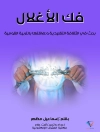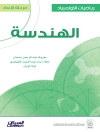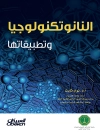BEST PRACTICES FROM CANADA’S HIGH-PERFORMING SCHOOL SYSTEMS
Empowered Educators in Canada is one volume in a series that explores how high-performing educational systems from around the world achieve strong results. The anchor book, Empowered Educators: How High-Performing Systems Shape Teaching Quality Around the World, is written by Linda Darling-Hammond and colleagues, with contributions from the authors of this volume.
Empowered Educators in Canada details the core commonalities that exist across Canada with special emphasis on the localized nature of the systems–a hallmark of Canadian education. Canada boasts a highly educated population, and the provinces/territories truly value education as evidenced by the significant proportion of public funds allocated to schooling.
Operated by the provinces and territories, participation in kindergarten, primary, and secondary education is close to 100% across the nation. In addition to offering traditional academics, secondary education includes opportunities for students to attend technical and vocational programs. To demonstrate exemplary education systems, the authors examine two top-performing jurisdictions, Alberta and Ontario, which have developed strong supports for teacher development.
Canadian teachers are highly qualified, and salary scales in all jurisdictions are typically based on a teacher’s level of education and years of experience. While Canada has enjoyed much educational success, the education of First Nations students has historically been one of the country’s more controversial and contentious issues.
Overall, Canada is a country that is proud of its education system and places a high value on–and participation in–publicly funded education.
Innehållsförteckning
Foreword vii
Acknowledgments xi
About the Sponsoring Organizations xiii
About the Authors xv
Online Documents and Videos xix
Chapter 1 Education in Canada 1
Overview of Canada 1
Governance of School Systems 5
Organization of the System 6
Primary and Elementary Education (Grades K-8) 6
Secondary Education (Grades 9-12) 7
Separate and Private Schools 7
Educational Funding 7
Student Expenditure 8
Working Conditions 9
Teacher Pay 9
Teaching Time 9
Aboriginal Education 10
Conclusion 11
Chapter 2 Teacher Policies and Practices in Alberta 13
Geography 14
Demographics 14
Inequity for Racial (Visible Minorities) and Aboriginal
Populations 16
Students in Alberta 17
Student Population and Demographics 17
ESL and FNMI Students 19
Social Welfare 19
Student Learning in Alberta 20
Governance, Sociopolitical, and Historical Context
in Alberta 20
Alberta Education (Ministry of Education) 22
The Alberta Teachers’ Association 22
Alberta Ministry of Innovation and Advanced Education 23
Funding for Education 23
Curriculum and Curricular Decision Making 27
Focus on the Whole Child 28
Student Assessment 28
Educational Equity Concerns 30
Teachers in Alberta 31
Teacher Compensation 32
The Work of Alberta’s Teachers 35
Teacher Attrition and Retention 39
Teacher Preparation 41
Funding 42
Teacher Preparation Programs 43
Teacher Certifi cation 50
Teacher Induction 52
Professional Learning/School Improvement 54
School Improvement 61
Change in Institutional Resources 62
Change in Teaching Approaches and Strategies 62
Alteration of Pedagogical Assumptions or Theories
Related to Innovation 63
Teacher Evaluation/Supervision/Teacher Growth 65
Conclusion 66
Appendix 2-A Teaching Quality Standards 70
Appendix 2-B Vignettes of Teacher Preparation Programs 75
Ambrose University 75
Canadian University College 76
Concordia University College of Alberta 77
The King’s University 79
University of Alberta 80
The University of Calgary 83
The University of Lethbridge 85
Chapter 3 Teacher Policies and Practices in Ontario 87
System Improvement and Ontario’s Theory of Action 88
Ontario’s Theory of Action for Educational Improvement 90
Overview: Ontario Education System 91
Length of School Year, Instructional Time, and
Organization of the School Day 93
Governance at the Provincial and Local Level 94
The Ontario Ministry of Education 95
Provincial Curriculum and Assessment 97
District School Boards 98
School Councils 99
Teachers’ Federations 100
The Ontario College of Teachers 101
Principals’ Associations 102
Partnership Working among Provincial and
Local Organizations 102
Improving the Ontario Education System: Provincial
Goals and Results 108
Focus on Priority Goals 109
Looking to the Future: A Renewed Vision for
Achieving Excellence 115
Supporting Teachers and Teaching Quality 118
Initial Teacher Education 121
Recruitment 137
Induction: The New Teacher Induction Program (NTIP) 155
Continuing Professional Learning 160
Evaluation and Performance Management 182
Teachers’ Career Development 185
Leadership Development for Administrators 188
Leadership Recruitment and Succession Planning 190
Preparation and Professional Development of Administrators 192
Conclusion 197
Appendix: Methodology 203
References 205
Om författaren
CAROL CAMPBELL is associate professor of Leadership and Educational Change and codirector of the Knowledge Network for Applied Education Research at the Ontario Institute for Studies in Education, University of Toronto.
KEN ZEICHNER is the Boeing Professor of Teacher Education at the University of Washington, Seattle. Prior to moving to the University of Washington, Zeichner was the Hoefs-Bascom Professor of Teacher Education and associate dean for Teacher Education and International Education at the University of Wisconsin, Madison.
ANN LIEBERMAN is currently a senior scholar at Stanford University. She is an emeritus professor from Teachers College, Columbia University.
PAMELA OSMOND-JOHNSON is an assistant professor of Educational Administration with the Faculty of Education at the University of Regina.












